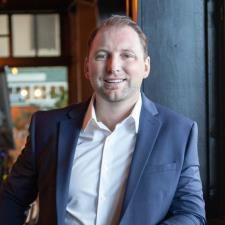Eric B. answered • 08/09/23
Biology Teacher with 16 classroom and 15 "real world" years experience
Actually, the Calvin Cycle consumes six CO2 molecules - but it's not that simple. You might be thinking of the Krebs cycle? Anyway, CO2 is captured in chloroplasts by a five-carbon molecule called ribulose bisphosphate (abbreviated RuBP) which then forms a six-carbon compound that immediately splits into two 3-carbon compounds (see, I told you it wasn't that simple!). The rest of the Calvin cycle does a couple of things: 1. it "juices up" the carbon in those 3-C compounds so it contains more energy. That carbon may then be used to make glucose (or many carbohydrates), amino acids, lipids, etc. via many different pathways. That energy pumped into carbon came from high-energy electrons captured in NADPH during the light reactions and ATP also made during the light reactions. 2. it recovers the remaining carbons to make that magic 5-carbon RuBP molecule I alluded to earlier. Thus, the Calvin cycle really has three aspects: 1. carbon fixation (capturing that dead, lifeless CO2 from the atmosphere into molecules in the plant), 2. reduction (which means reducing or making more negative) of carbon using high-energy electrons (which have a negative charge) from NADPH, and 3. regeneration where the remaining carbon is "recycled" to RuBP to accept another CO2 molecule. The cycle must crank through six times to procure enough carbon for one glucose molecule. It should be noted that the Calvin cycle is incredibly complex and involves multiple rearrangements of several different carbon compounds to arrive at something like glucose; it's not simply "hooking together" 6 CO2 and voila! Here's your glucose!





